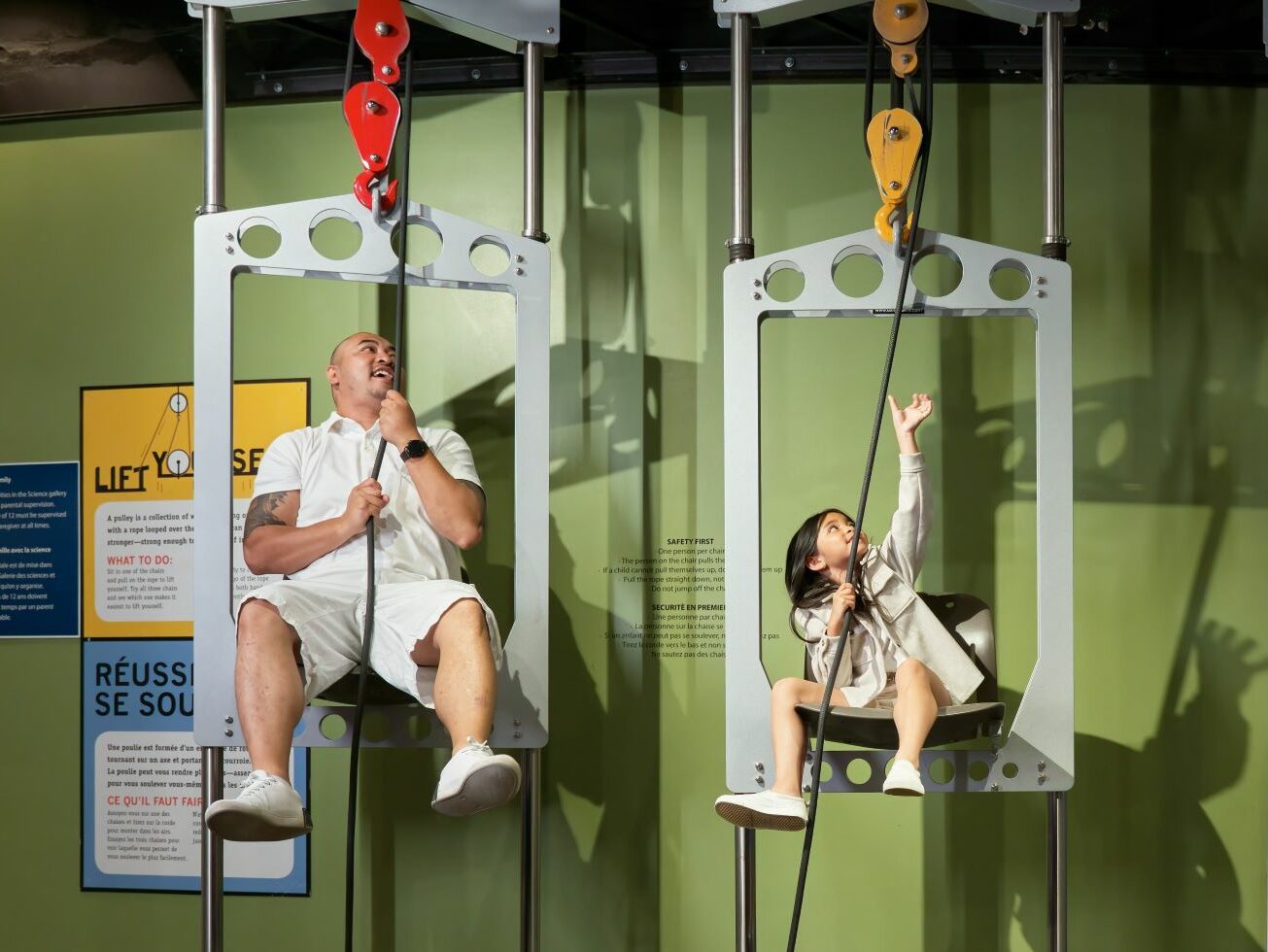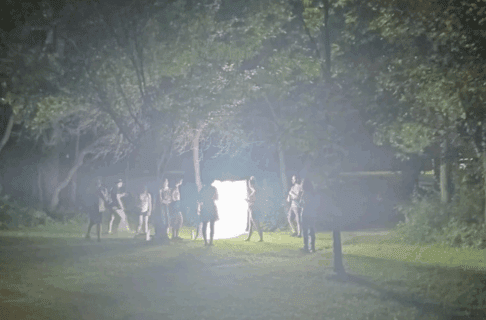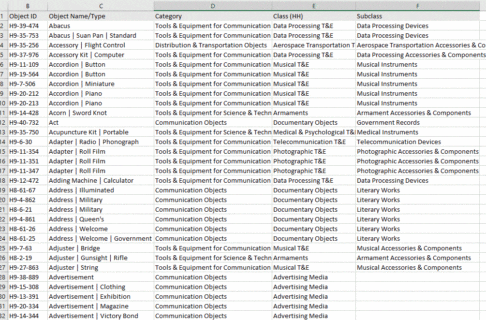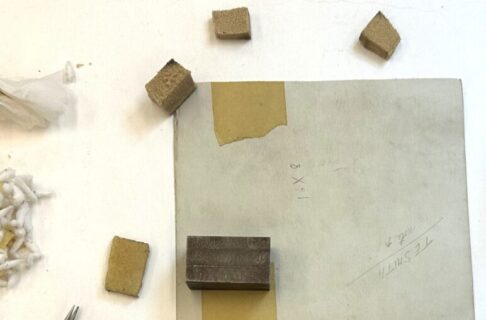Posted on: Wednesday March 14, 2012
By Ann Hindley, past Collections Assistant
Part of a Collections Assistant’s work in the Museum’s History Department is to fully catalogue artifacts which have been acquired for the permanent collections.
This involves assigning a unique museum number to the object, writing a description, explaining how it was used and by whom, and researching how it relates to Manitoba’s history. When researching artifacts, the Museum has an excellent Reference Library, where staff can check out books related to many historical topics; the internet is also a valuable resource. The information gathered is entered into an in-house collections management database, and the artifact is also photographed before being placed in a storage room or on exhibit.
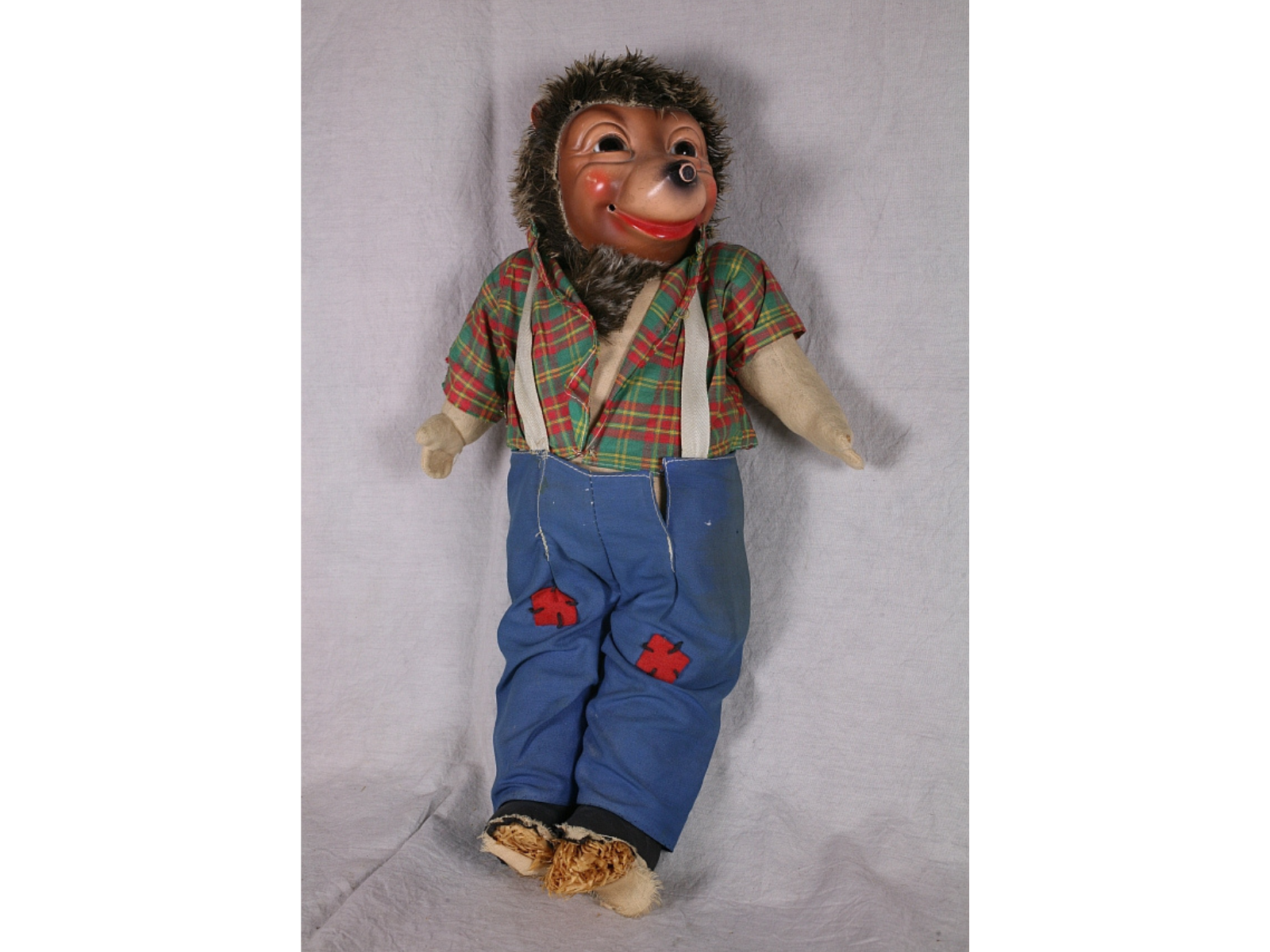
One interesting and unusual object in the collection is a 1950s Hedgehog Doll, named Mecki, manufactured by the Steiff company. The doll has a pressed rubber head in the image of a hedgehog, painted eyes and nose, and mohair fabric hair and chest. The jointed body is stuffed with straw, which makes it quite different from other dolls and toys in the collection.
Purchased by the donor in Germany in 1952, this is the father doll in a family of four, the others being Micki (mother), Macki (girl) and Mucki (boy). As Mecki was the only doll from this family to be donated, the Museum is on the lookout to find the remaining family members to complete the set.
Image: Mecki, the father hedgehog doll.
In 1936, Ferdinand Dichl made a full-length animated film entitled, “The Race between the Hare and the Hedgehog”, using bendable figures. In 1951, Dichl Films sold the copyright to the West German magazine Horzu for the immensely popular characters to be made into a comic strip.
At the same time, the Steiff company bought the rights to make the hedgehog characters into toys. The Steiff company was established by Margarete Steiff and her brother, Fritz, in the late 1800s. They produced a line of toys, including felt or plush animals, teddy bears, gnomes, and Kewpie dolls. The company is now the largest manufacturer of soft toys in Germany, and one of the most recognized brands of toys in the world. Each of their animal toys has a trademark metal button inside the ear, which is used to distinguish Steiff toys from fakes. The Museum has one other Steiff toy in the history collection, which is a pull-along teddy bear on wheels dating to the early 1900s.
There are many interesting objects in the collection which have not yet been exhibited, but Collections Assistants attempt to provide as much information as possible for Curators and researchers, so that the history of the objects is documented for future use in exhibits, publications, etc. Sometimes the research process can be frustrating when there’s a lack of information on the objects, but that’s one of the challenges of cataloguing museum artifacts, which makes the job all the more interesting.


